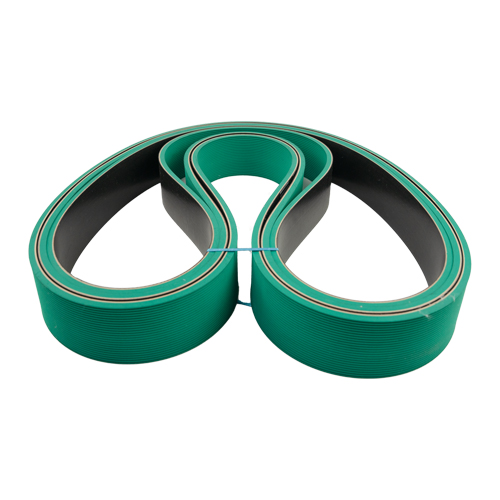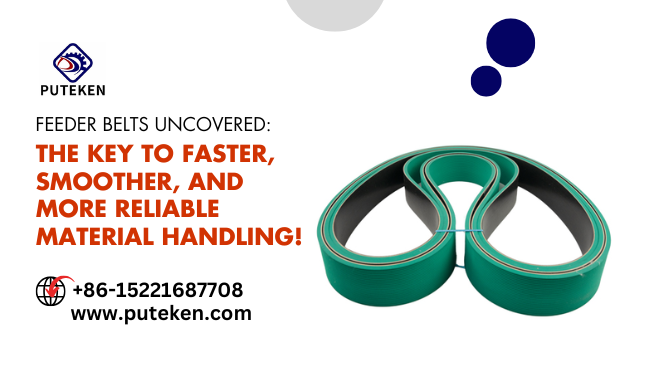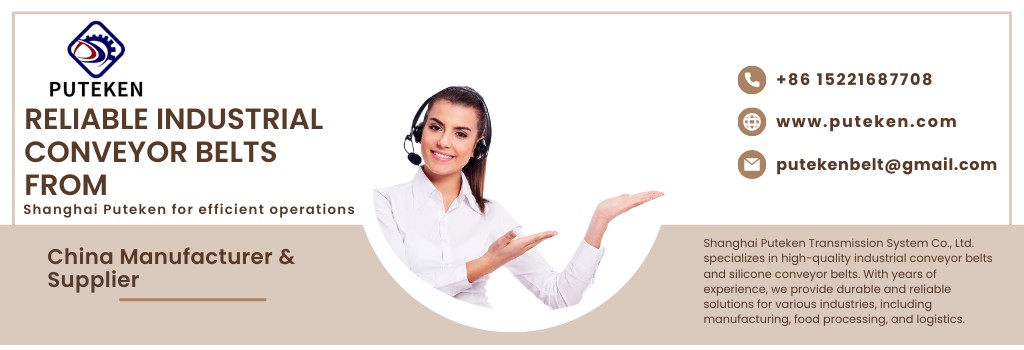
In the dynamic world of industrial operations, every second counts. From manufacturing plants to packaging lines, efficiency, reliability, and precision remain the driving forces behind successful material handling systems. One often-overlooked component that plays a critical role in this process is the Feeder Belt. Surprisingly, while many industries focus heavily on large machinery and automation, they underestimate the impact of quality feeder belts in enhancing productivity, reducing downtime, and ensuring seamless material flow.
At Shanghai Puteken Transmission System Co., Ltd., we understand the evolving needs of modern industries. Over the years, we’ve witnessed how the right Feeder Belt can revolutionize operations across sectors such as logistics, food processing, pharmaceuticals, packaging, textiles, and printing. After all, when it comes to handling raw materials, semi-finished goods, or finished products, every component within the system — no matter how small — must perform flawlessly.

As industries strive to meet growing demands, particularly with the rise of e-commerce, faster production cycles, and stringent quality standards, the significance of the Feeder Belt has become more prominent than ever. These belts are no longer just conveyor accessories; instead, they are the backbone of any material handling operation. Consequently, investing in high-quality feeder belts can be the difference between a smooth production flow and costly operational bottlenecks.
So, what exactly makes a Feeder Belt indispensable? To begin with, these belts are specifically engineered to manage and transport materials with precision and control. Their primary function is to regulate the flow of materials from one process to another — feeding machinery, packaging systems, and processing units at consistent speeds. Thanks to their unique design and superior material composition, they ensure materials are neither delayed nor damaged during transit. This guarantees optimal efficiency, product integrity, and enhanced output — critical factors in today’s competitive landscape.
Moreover, with advancements in material science and manufacturing technologies, modern Feeder Belts offer a wide range of features that cater to diverse industrial applications. For instance, heat resistance, anti-static properties, oil resistance, and superior grip surfaces are now standard in many industries. As a result, businesses benefit from fewer breakdowns, lower maintenance costs, and prolonged equipment life.
Furthermore, it is essential to acknowledge that not all feeder belts are created equal. Inferior belts often lead to material slippage, inconsistent speeds, wear and tear, and even production stoppages. Therefore, selecting the right Feeder Belt from a trusted manufacturer like Shanghai Puteken Transmission System Co., Ltd. is crucial for ensuring smooth and reliable material handling. With our expertise, high-quality products, and commitment to innovation, we provide customized solutions that cater to the specific needs of each industry.
In today’s highly competitive industrial landscape, companies are constantly seeking ways to streamline operations and improve productivity. One often underestimated yet crucial component is the Feeder Belt. Specifically designed to move materials accurately and efficiently, feeder belts serve as the backbone of many production lines.
What is a Feeder Belt?
A Feeder Belt is a specialized belt used in material handling systems to transport products or raw materials steadily and consistently. Unlike regular conveyor belts, feeder belts are designed for precise control — ensuring a steady flow of materials into machines, packaging units, or production lines.
Key Components of a Feeder Belt System
- High-Quality Belt Material
- Tensioners and Pulleys
- Drive Systems
- Control Units
Together, these components ensure seamless material movement, supporting faster and smoother industrial processes.
How Feeder Belts Work
Feeder belts operate by providing consistent tension and friction, preventing materials from slipping or bouncing during transfer. Whether handling delicate food items or heavy metal parts, these belts offer the stability needed to maintain production accuracy.
Because they work at various speeds and handle diverse materials, feeder belts need to be highly reliable, flexible, and durable — qualities we guarantee at Shanghai Puteken Transmission System Co., Ltd..
Advantages of Using High-Quality Feeder Belts
Enhanced Efficiency
Feeder belts streamline material flow, minimizing manual handling and reducing production time.
Reduced Downtime
With robust construction, they minimize breakdowns and keep your production lines running smoothly.
Improved Product Quality
Consistent material flow reduces product damage, maintaining high standards of quality.
Cost-Effectiveness
Durability and minimal maintenance needs translate into lower operational costs.
Common Industrial Applications of Feeder Belts
Packaging Industry
Perfect for feeding cartons, bottles, and packages swiftly and safely.
Food Processing Sector
Essential for moving baked goods, meat, or dairy without contamination.
Pharmaceutical Industry
Ensures delicate medicines and packages are handled precisely.
Printing and Textile Industries
Handles delicate fabrics and printed materials without creasing or damage.
Features that Set Premium Feeder Belts Apart
Durability and Resistance
Made from high-grade materials designed to withstand harsh environments.
High Traction and Grip
Prevents material slippage, even at high speeds or steep inclines.
Chemical and Temperature Resistance
Ideal for industries dealing with oils, acids, or extreme temperatures.
Customization for Specific Needs
Custom designs ensure the perfect fit for your operations.
Choosing the Right Feeder Belt for Your Industry
Factors to Consider
- Material Type
- Load Capacity
- Operating Environment
- Speed Requirements
- Consultation and Custom Solutions
Our team at Shanghai Puteken Transmission System Co., Ltd. works closely with clients to design tailor-made solutions.
Common Challenges in Material Handling and How Feeder Belts Solve Them
Material Slippage
Our high-grip feeder belts eliminate slippage, ensuring materials stay on track.

Production Delays
Consistent material flow prevents bottlenecks and keeps productivity high.
Wear and Tear Issues
Durable materials reduce frequent replacements and extend service life.
Maintenance Tips to Prolong Feeder Belt Life
Routine Inspections
Check for wear, tension, and alignment regularly.
Cleaning and Lubrication
Keeps belts running smoothly and prevents material buildup.
Timely Replacements
Prevents costly downtime by replacing worn belts before failure.
Why Choose Shanghai Puteken Transmission System Co., Ltd.?
Industry Expertise
Years of experience in transmission systems make us a trusted partner.
Custom Feeder Belt Solutions
We offer bespoke solutions tailored to your industry’s unique needs.
Commitment to Quality and Innovation
We stay ahead of the curve with innovative designs and premium materials.
Future Trends in Feeder Belt Technology
Smart Belts and IoT Integration
Next-gen feeder belts with sensors will monitor performance in real-time.
Eco-Friendly Materials
Sustainability is the future — expect greener, recyclable materials soon.
Client Success Stories
Real-World Applications
From automating packaging lines to boosting food production — our feeder belts deliver results.
Tangible Benefits Achieved
Clients report increased productivity, reduced costs, and smoother operations.
Feeder Belts are the unsung heroes of modern industrial material handling systems. From improving efficiency and reducing downtime to ensuring product quality, these belts are indispensable in multiple sectors. At Shanghai Puteken Transmission System Co., Ltd., we provide high-performance, customized feeder belts designed to meet your unique business needs.
Don’t overlook this critical component. Instead, embrace the power of high-quality Feeder Belts and watch your production line transform into a faster, smoother, and more reliable operation.
FAQs
- Q1: What materials are feeder belts made from?
They are typically made from rubber, polyurethane, or PVC, depending on the application.
- Q2: How often should I replace my feeder belt?
With proper maintenance, they last several years but should be replaced at the first sign of excessive wear.
- Q3: Can feeder belts handle heavy loads?
Absolutely! Custom designs can manage both light and heavy materials.
- Q4: Are feeder belts suitable for food-grade applications?
Yes, we provide food-grade belts that meet hygiene and safety standards.
- Q5: How do I know which feeder belt is right for my business?
Our experts assess your needs and recommend the best solution for your operations.